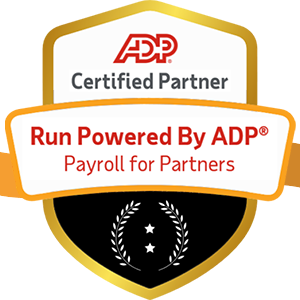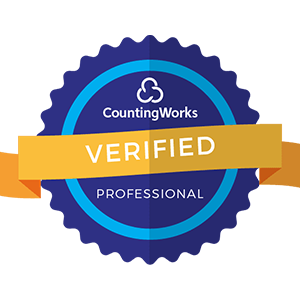
The Digital Onboarding Advantage: Organizations using technology-enabled onboarding achieve 54% greater new hire productivity and 50% higher retention rates in the first 18 months. Yet 76% of companies still rely primarily on manual, paper-based processes. Digital onboarding reduces time-to-productivity by 62% while improving new hire engagement scores by 43% compared to traditional approaches.
The first few weeks of employment fundamentally shape an employee's long-term relationship with an organization. Research consistently demonstrates that employees who experience positive onboarding are 69% more likely to remain with a company for at least three years, while poor onboarding experiences drive 20% of staff turnover within the first 45 days.
Traditional onboarding approaches—characterized by mountains of paperwork, passive information sessions, and fragmented processes—fail to meet modern employee expectations or business needs. Today's workforce, particularly digital natives, expects seamless, interactive experiences that mirror the sophisticated consumer technologies they use daily.
The COVID-19 pandemic accelerated this transformation by making remote onboarding a necessity rather than an option. Organizations that quickly adapted to technology-enabled onboarding not only maintained effectiveness but often improved outcomes compared to their previous in-person processes.
This shift represents more than operational convenience—it reflects a fundamental evolution in how organizations introduce new employees to their culture, values, and expectations while building the foundation for long-term success.

Digital transformation in onboarding extends far beyond automating paperwork to encompass comprehensive reimagining of how organizations welcome, orient, and integrate new team members.
Technology-enabled onboarding breaks down geographic and temporal barriers that limit traditional approaches. New hires can complete essential tasks, access training materials, and connect with colleagues regardless of location or time zone, providing flexibility that supports diverse work arrangements and personal circumstances.
Mobile-optimized platforms ensure that onboarding resources remain accessible through preferred devices, enabling new employees to engage with materials during commutes, breaks, or other convenient times. This accessibility proves particularly valuable for field workers, remote employees, or those with varying schedules.
Asynchronous learning capabilities allow new hires to progress through orientation materials at optimal paces for their learning styles and comprehension needs. This personalization improves retention and reduces the stress often associated with trying to absorb large amounts of information quickly.
Digital platforms ensure that every new employee receives identical information and experiences, regardless of which manager conducts their onboarding or when they start. This consistency becomes crucial for large organizations where manual processes often result in significant variation in onboarding quality.
Standardized workflows prevent important steps from being overlooked while maintaining compliance with legal and regulatory requirements. Automated checklists and progress tracking ensure that both new hires and their managers stay on schedule with critical activities.
Quality control improves when onboarding content is centrally managed and updated rather than distributed across multiple locations or departments where materials may become outdated or inconsistent.
Digital onboarding generates comprehensive analytics about new hire engagement, completion rates, and areas where people struggle or succeed. This data enables continuous improvement of processes and content based on actual user behavior rather than assumptions.
Predictive analytics can identify early warning signs of disengagement or potential retention risks, enabling proactive interventions before issues become serious problems. These insights prove particularly valuable for managers who may not recognize subtle signs of onboarding challenges.
Benchmarking capabilities allow organizations to compare their onboarding effectiveness against industry standards while tracking improvement over time through objective metrics rather than subjective assessments.
Successful digital onboarding requires thoughtful integration of multiple technologies and approaches that work together to create cohesive, engaging experiences.
Modern onboarding platforms must integrate seamlessly with existing HR information systems, learning management systems, and business applications to provide unified experiences without forcing new hires to navigate multiple disconnected systems.
Single sign-on capabilities reduce friction and frustration while ensuring security and access control across all onboarding resources. New employees should be able to access everything they need through a single portal or dashboard.
Mobile-first design ensures that all onboarding experiences work effectively on smartphones and tablets, recognizing that many users prefer or require mobile access for various activities.
API integration enables custom workflows and connections with specialized tools or industry-specific applications that support particular business needs or compliance requirements.
Interactive content development moves beyond static documents and videos to include simulations, virtual reality experiences, and gamified learning that actively engages new hires while improving information retention.
Microlearning approaches break complex information into digestible segments that can be consumed and applied incrementally rather than overwhelming new employees with extensive training sessions.
Multimedia integration uses various content types—videos, podcasts, interactive presentations, and visual infographics—to accommodate different learning preferences while making information more engaging and memorable.
Social learning features enable new hires to connect with each other and existing employees through forums, chat functions, and collaborative projects that build relationships while facilitating knowledge transfer.
Role-based customization ensures that new employees receive information and training relevant to their specific positions while avoiding unnecessary content that might dilute focus or create confusion.
Learning path optimization adapts to individual progress and performance, providing additional support in areas where new hires struggle while accelerating through topics they master quickly.
Cultural integration assessments identify individual preferences and backgrounds that might affect onboarding needs, enabling personalized approaches that improve comfort and engagement levels.
Manager involvement tools provide supervisors with insights into their new employees' progress while suggesting optimal timing for check-ins and support interventions.

Leading organizations are leveraging cutting-edge technologies to create onboarding experiences that were impossible with traditional approaches.
Virtual office tours provide immersive introductions to physical workspaces that are particularly valuable for remote employees or those starting before facilities are available. These tours can include interactive elements that highlight important locations, services, and resources.
Job simulation experiences allow new hires to practice tasks and procedures in risk-free virtual environments before handling real responsibilities. This approach proves especially valuable for complex or safety-critical roles where mistakes could have serious consequences.
Cultural immersion applications use VR to showcase company values and behaviors through realistic scenarios that help new employees understand expected norms and practices more effectively than written policies or presentations.
Training simulations provide hands-on experience with equipment, software, or procedures that might otherwise require extensive setup or present safety risks during initial learning phases.
Intelligent chatbots provide 24/7 support for common questions and issues, reducing pressure on HR teams while ensuring new hires receive immediate assistance when needed. These systems can handle routine inquiries while escalating complex issues to human representatives.
Personalized content recommendations suggest relevant resources, training modules, or connections based on individual roles, backgrounds, and demonstrated interests or needs.
Predictive analytics identify potential retention risks or performance challenges based on onboarding engagement patterns, enabling proactive interventions before problems become serious.
Natural language processing analyzes feedback and communications to identify sentiment patterns and areas where onboarding experiences might be improved.
Digital buddy systems match new hires with experienced employees who can provide guidance, answer questions, and facilitate social integration through structured or informal interactions.
Social networking platforms create opportunities for new employees to connect with colleagues across departments and locations, building relationships that support long-term success and engagement.
Collaborative project assignments involve new hires in meaningful work that contributes value while providing practical experience and relationship-building opportunities.
Recognition and celebration systems highlight new hire achievements and milestones, building positive momentum while demonstrating organizational values around appreciation and acknowledgment.
Successful technology integration requires careful attention to change management, user adoption, and continuous improvement processes.
Leadership commitment proves essential for successful digital onboarding implementation, as executives must champion change while providing necessary resources and support for transformation initiatives.
Manager training ensures that supervisors understand how to use new systems effectively while maintaining their critical role in personal connection and support during onboarding periods.
Employee feedback collection from both new hires and existing staff provides insights into system effectiveness while identifying areas where improvements or adjustments might be beneficial.
IT collaboration ensures that technical infrastructure can support new systems while maintaining security, compliance, and integration requirements.
Limited scope pilots allow organizations to test technology solutions with small groups while gathering feedback and refining approaches before full-scale implementation.
A/B testing compares different approaches or content to identify most effective methods for achieving specific outcomes like engagement, retention, or time-to-productivity.
Continuous feedback loops collect ongoing input from users about system functionality, content quality, and overall experience satisfaction.
Performance monitoring tracks key metrics throughout implementation to ensure that technology investments are delivering expected benefits and identify areas needing attention.
User documentation provides clear, accessible guidance for both new hires and managers about how to navigate and utilize onboarding systems effectively.
Help desk support ensures that technical issues or questions can be resolved quickly without disrupting onboarding progress or creating frustration.
Train-the-trainer programs build internal expertise for supporting system usage while reducing dependence on external vendors for routine issues.
Regular refresh training keeps managers and HR staff current on system updates and best practices for maximizing technology effectiveness.
Comprehensive measurement approaches track both quantitative outcomes and qualitative experiences to ensure that technology investments generate meaningful returns.
Time-to-productivity measurements track how quickly new hires begin contributing effectively in their roles, providing objective assessment of onboarding efficiency and effectiveness.
Completion rates for onboarding tasks and training modules identify areas where new employees struggle or disengage, enabling targeted improvements to content or processes.
Retention analysis examines whether digital onboarding participants show improved retention compared to previous approaches or control groups.
Engagement metrics track participation levels, time spent on various activities, and interaction frequency to assess overall involvement and interest.
Cost analysis compares total onboarding expenses including technology, staff time, and materials against previous approaches to demonstrate return on investment.
New hire satisfaction surveys gather feedback about onboarding experience quality, usefulness, and areas for improvement from the perspective of those going through the process.
Manager feedback assessment examines whether supervisors feel that new employees are better prepared and more quickly integrated compared to previous onboarding approaches.
Cultural integration evaluation measures whether new hires develop appropriate understanding of organizational values, norms, and expectations through digital onboarding experiences.
Long-term impact assessment tracks whether positive onboarding experiences translate into sustained engagement, performance, and career development over extended periods.
Organizations commonly encounter predictable obstacles when implementing digital onboarding that can be managed through proactive planning and response strategies.
User resistance often stems from familiarity with existing processes or concern about technology complexity. Comprehensive training and support help address these concerns while demonstrating clear benefits of new approaches.
Technical difficulties during implementation can frustrate users and undermine confidence in new systems. Thorough testing and reliable support infrastructure help minimize these issues while ensuring quick resolution when problems occur.
Integration challenges with existing systems may create data synchronization issues or workflow disruptions. Careful planning and technical expertise help anticipate and address these challenges before they affect user experiences.
Content creation requires significant initial investment in time and resources to develop high-quality, engaging materials that effectively support onboarding objectives.
Ongoing maintenance ensures that information remains current and accurate as business processes, policies, or personnel change over time.
Quality control processes maintain consistency and effectiveness of content across different roles, departments, and time periods.
Localization needs for global organizations require adaptation of content for different languages, cultures, and regulatory environments.
Initial technology costs may require substantial upfront investment that organizations must balance against long-term benefits and cost savings.
Staff time allocation for implementation, training, and ongoing management must be factored into resource planning and budget considerations.
Vendor management requires ongoing attention to ensure that technology providers deliver promised functionality while providing adequate support and service.

Digital onboarding continues evolving as new technologies and approaches become available, creating opportunities for enhanced experiences and improved outcomes.
Machine learning algorithms will increasingly provide personalized onboarding experiences that adapt in real-time based on individual learning patterns, preferences, and performance indicators.
Predictive analytics will become more sophisticated in identifying optimal onboarding sequences and interventions for different employee types and roles.
Natural language processing will enable more sophisticated chatbots and automated support systems that can handle complex questions and provide nuanced guidance.
Virtual reality applications will become more accessible and sophisticated, providing realistic job simulations and cultural immersion experiences that were previously impossible.
Augmented reality will overlay digital information onto real-world environments, providing contextual guidance and information during actual work activities.
Mixed reality applications will combine virtual and physical elements to create hybrid experiences that bridge remote and in-person onboarding activities.
Platform consolidation will reduce the number of separate systems new hires must navigate while providing more seamless experiences across all HR and business functions.
API standardization will enable better integration between different vendors and systems, reducing technical complexity while improving user experiences.
Analytics integration will provide comprehensive insights across all aspects of employee experience from recruitment through long-term performance and development.
Organizations planning digital onboarding transformation benefit from structured approaches that build capability systematically while managing change effectively.
Current state analysis evaluates existing onboarding processes, technology infrastructure, and employee satisfaction to establish baseline understanding and improvement priorities.
Technology requirements assessment determines specific functionality needs based on organizational size, complexity, and strategic objectives.
Vendor evaluation compares available solutions against requirements while considering factors like cost, integration capabilities, and support quality.
Change management planning addresses organizational readiness and develops strategies for managing transition from existing processes to new approaches.
Limited scope pilots test selected technologies and approaches with small groups while gathering feedback and refining implementation strategies.
User feedback collection provides insights into system usability, content effectiveness, and overall experience quality from both new hire and manager perspectives.
Technical validation ensures that systems function correctly and integrate properly with existing infrastructure before broader deployment.
Process refinement incorporates lessons learned from pilot experiences into plans for full-scale implementation.
Organization-wide rollout implements digital onboarding across all departments and locations while maintaining quality and consistency.
Training and support programs ensure that all stakeholders understand how to use new systems effectively while providing ongoing assistance as needed.
Performance monitoring tracks key metrics to ensure that implementation delivers expected benefits while identifying areas needing attention or improvement.
Continuous improvement processes enable ongoing refinement based on user feedback, performance data, and changing business needs.
Digital onboarding represents a fundamental shift in how organizations welcome and integrate new employees, moving from administrative processes to strategic experiences that shape long-term success. The technology tools available today enable personalized, engaging, and efficient onboarding that was simply impossible with traditional approaches.
However, successful implementation requires more than selecting the right technology—it demands thoughtful integration of digital tools with human connection to create experiences that are both efficient and emotionally engaging. The most effective digital onboarding programs enhance rather than replace human relationships while providing superior consistency, accessibility, and measurement capabilities.
Organizations that master digital onboarding gain competitive advantages in talent attraction and retention while building stronger, more engaged workforces. These capabilities become increasingly important as competition for talent intensifies and employee expectations continue evolving toward more sophisticated, personalized experiences.
The future belongs to organizations that recognize onboarding as a strategic investment rather than an administrative necessity. By leveraging technology to create outstanding first impressions and set new employees up for success, companies position themselves advantageously in competitive talent markets while building the foundation for sustained organizational performance.
The transformation to digital onboarding is not just about improving efficiency—it's about creating experiences that demonstrate organizational values, build employee confidence, and establish the relationships that drive long-term engagement and success. Organizations that embrace this opportunity will find themselves better positioned to attract, integrate, and retain the talent needed for continued growth and innovation.


